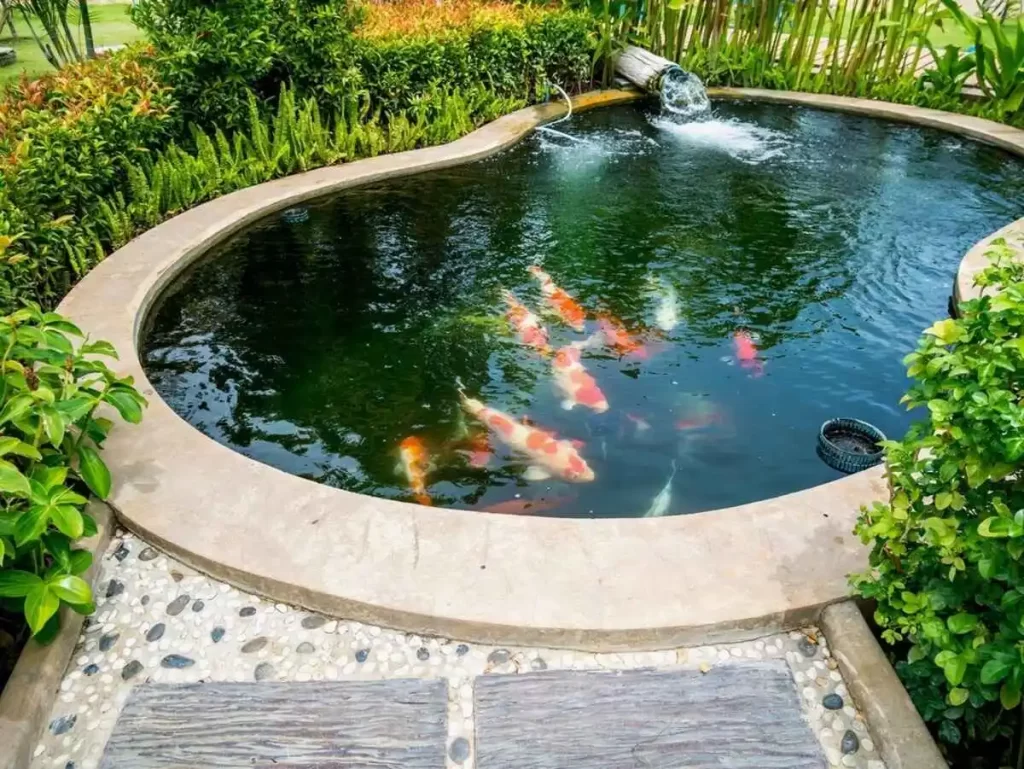Any outdoor area can benefit greatly from the inclusion of a pond. However, it must be maintained regularly to be a pleasure to enjoy. Appropriate pond upkeep is also necessary to guarantee a sanitized and wholesome environment for fish and plants. If this habitat is not kept up, all of the life in the pond could go extinct.
Is It Hard to Maintain a Pond?
If your pond has been carefully planned and fitted with a good filtration system, it should take only 10 to 15 minutes of maintenance work once or twice a month. In fish-filled ponds, overstocking and overfeeding fish are the most common causes of poor water quality, so avoid this.
Having the right tools for pond maintenance will also make cleaning your pond less hassle. Here is what you’ll need to maintain the health and cleanliness of your pond.
Essential Pond Cleaning Tools
Skimmer Nets
It is one of the simplest tools to add to your pond-cleaning kit, yet it can be quite efficient at helping you remove twigs, leaves and other debris from your pond. A skimmer net comes with a mesh net that can collect any floating debris and a sturdy telescopic pole that allows you to access hard-to-reach places like the bottom of your pond.
Weed Cutter and Rake
While experts typically advise pulling weeds by hand, a weed cutter can be useful. A handheld cutter will do the work for small to medium-sized ponds. But for larger ponds with heavy weed infestations, an electric, gas-powered, or tow-behind cutter will be better suited.
Then, you’ll need a weed rake to remove the large pieces of string algae and weed. You run the rake across the pound’s surface to remove these elements. But be careful when handling this tool close to aquatic plants, as they can get uprooted. Use a rake with a short handle when pulling large weeds or string algae near your fish. You will give you better control, preventing you from uprooting them.
Pond Vacuums
No matter how efficient your pond pump and filter are, debris, sludge, and green algae will build up over time on your pond’s surface, running its neat appearance. Furthermore, sludge and dirt also tend to collect on the pond liner at the bottom, affecting the water quality and harming fish and plants.
A pound vacuum offers a quick and easy way to address this problem and keep your pond clean and healthy. Most of the models of pound vacuums available work from the side of the pond, using telescopic pipes to access all surfaces and edges, including the deeper ones. Pond vacuums, like home vacuum cleaners, use a suction hose to collect grit and debris. But instead of removing these materials from the surface, a pond vacuum uses suction power to draw water upward and collect debris.
Different types of pond cleaners are available. A hose-powered pond vacuum is lightweight, simple to use and less expensive than a pump-powered vacuum, making it a good choice for small ponds. It can reach up to 60 to 90 cm deep and the pound, cleaning hard-to-reach places.
Models that collect dirt in containers and return water to the pond are more suitable for bigger and deeper ponds. Usually, these pond vacuums include a big cleaning head and a smaller one for cramming into small areas.
Aerators
This is another great tool that you can use to help improve your pond’s water health. The purpose of an aerator is to prevent stagnation in your pond, which is a breeding ground for mosquitoes, smells, and floating organic materials. Certain aerators can also maintain constant oxygen levels in ponds that tend to freeze near the surface in colder climates throughout the winter.
You can either opt for a surface aerator or a bottom diffusion aerator. A bottom diffusion aerator or a surface aerator is your choice. Surface aerators like fountains can be a nice choice for a shallow pond. For a deeper pond, a bottom diffusion aerator is a better option.
Maintain Appropriate Water Levels
Ponds’ water levels typically drop quickly in the summer. This can consequently deprive aquatic organisms of enough oxygen. If you notice a dip in the water level, the pond must be filled with fresh water.
Because tap water has a high soluble content and encourages excessive algal development, it is not recommended for ponds. Adding a fill valve and filter to your water delivery system is a more effective way to replenish the water level. Water should make up three-quarters of the pound’s structure throughout the year. In extremely hot months, you can restock weekly.
Watch the Water Temperature
In the cold months, ice can form on the surface of your pond, causing the water’s temperature to drop. In this case, you’ll need a heating system to ensure optimum temperature levels in your pond.
In the warmer months, the water can heat up significantly, harming certain aquatic life. When the water gets too hot, you can spring or spray cold water to reduce the temperature to ideal levels.
Keep an Optimal Water Chemistry
Even if your pond is clear, you still need to check the chemistry of the water, which can change for various reasons.
Chlorine is one of the substances that generally alter the chemistry of water, potentially killing aquatic life. Decomposing plant remnants can also change the chemistry of the water by releasing toxic compounds and adding more organic debris. This means you must conduct tests periodically to identify any alterations in the chemistry of your pond’s water.
That is where a water test kit comes in. Water test kits allow you to check important factors critical to your pond’s ecosystem health, such as pH, ammonia, and nitrite levels. By performing regular tests, you get to identify and fix imbalances early, protecting your ecosystem from problems that might cause harm.

